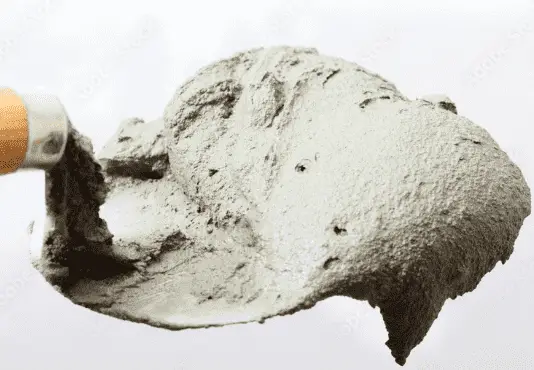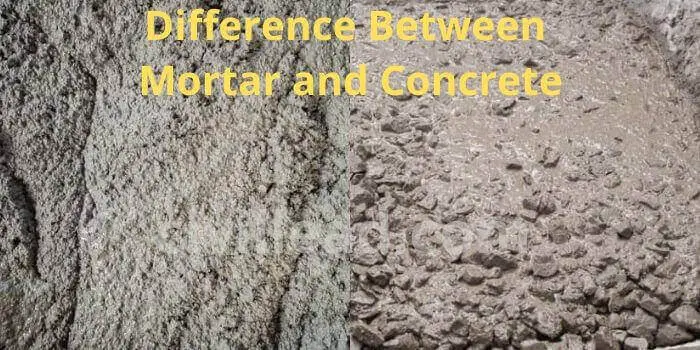Concrete and mortar are two of the most common building materials used today. Concrete is a composite material made of aggregates, such as sand, gravel, and crushed stone, bound together with a cement paste that hardens over time. Mortar is a finer-grained material made from cement, sand, water, and sometimes other additives such as lime or Portland cement. Both concrete and mortar can be used to construct walls, foundations, or floors. However, they have different properties and applications for construction projects.

Concrete is much stronger than mortar due to its higher cement content and lower water content. This makes it more suitable for structural applications where load-bearing capacity needs to be increased. Conversely, mortar has higher water content, making it challenging to produce an appropriate mix for structural purposes; however, this does not disadvantage it in any way when it comes to decorative applications such as plastering or pointing walls. Additionally, adding gravel or other additions to the mix can gain more advantages, such as superior texture or strength for their particular project.
Mortar’s flexibility makes it easier to work with concrete than concrete, allowing contractors to adjust the consistency of the mix as needed during installation, depending on the purpose of their project. Moreover, because of its low shrinkage rate and superior waterproofing capabilities, mortar is often used in areas that experience drastic temperature changes throughout the year since its joints don’t expand. Consequently, concrete does (making them less prone to cracking). Concrete and mortar are essential components of modern construction, yet each has unique characteristics that make them best suited for particular projects.
Concrete vs. mortar

What is the difference between concrete and mortar?
Differences between concrete and mortar are:
- The mortar mix contains only cement, sand, and water.
- Concrete has aggregate added, such as gravel or perlite.
- Mortar is a thicker mixture than concrete.
- Mortar is less durable than concrete.
- Concrete is much stronger than mortar.
- The water-to-cement ratio in mortar is much higher than in concrete.
- The low water-cement ratio in concrete makes concrete an inappropriate bonding material.
- The mortar needs to be replaced every 25-50 years.
- Concrete works intact for a very long time
- Mortar is used as a bonding element.
- Concrete is used as a support element (beams, walls, structure elements)
Regarding construction projects, two materials are essential: concrete and mortar. Both of these materials have a variety of uses and applications. Still, some essential differences should be considered when deciding which material suits the job.
The most fundamental difference between concrete and mortar is in their composition. Mortar comprises only cement, sand, and water, while concrete has added aggregate, such as gravel or perlite. Because of this, mortar has a much higher water-to-cement ratio than concrete and is less durable than concrete. This makes mortar an inadequate bonding material and necessitates replacing it every 25-50 years. In contrast, concrete is much stronger than mortar due to its low water-cement ratio, which helps it last very long.
Mortar also differs from concrete in its purpose. Mortar serves primarily as a bonding element, while concrete is mainly used as a support element such as beams, walls, or other structural components. This means that mortar needs to be applied in thin layers between bricks or stones, while thicker layers of concrete can be poured to create support structures like foundations or walls.
When selecting between these two materials for construction projects, one must consider the project’s intended use project projected me to determine which material best suits the project’s requirements. For example, if a project requires muscular bond strength, then using mortar would not suffice, whereas with good bond strength being key, using mortar would be better suited than using concrete alone. Additionally, if the project requires extra support, using mortar and concrete together can create a sturdy foundation capable of withstanding heavy loads and intense conditions such as torrential rains or seismic activity.
In conclusion, many differences between concrete and mortar should be considered before selecting either for construction projects depending on what is needed from the project’s outcome, such as the project’s extra bond strength to additional support structures. One must always weigh each material’s advantages or materials based on the specific project’s needs to determine which is better suited for its purpose and ensure the project’s successful completion.
Mortar is the mixture of all those stone gravels grounded and transformed into a powder-like form, used in the concrete to provide a sleek-like shape.
Many marketers or even brands sell those products as fine aggregates with small, visible rocky stones. To avoid having this type of brand and product, you need to ask the marketer or businessman for mortar mixes. Mortar mixes are powder-like material in shape, and once they are dry, they give a smooth and sleek silhouette.
Which is an excellent deal for the countertop and the walls. Where the impact is lower than the sidewalks or roads, mortar is the best option to make countertops or have a sleek, smooth appearance wall. Some mortar mix types with their prices and affordability features plus the quantity available and easy to buy and use.
Conclusion
The differences between concrete and mortar are significant. Concrete is an artificial material composed of cement, sand, and gravel, forming a firm, durable solid when mixed with water. Mortar is a construction material made from a mixture ohydrated lime or gypsum. It provides a waterproof bond between masonry units such as bricks and stones, making it ideal for building walls or other structures. Concrete has much greater compressive strength than mortar, making it suitable for structural elements such as beams and columns. In contrast, mortar is more flexible but weaker than concrete and, therefore, best used for non-structural applications such as laying bricks or tiling floors.
Another critical difference between concrete and mortar is that while concrete can be made without any admixtures or additives, this isn’t the case with morisn’tAdding admixtures such as air-entraining agents is often required to complete the mortar workable enough to lay bricks or tiles effectively. Furthermore, while both materials are susceptible to freeze/thaw damage, they typically need different repair methods, usually patching with fresh concrete for larger cracks in concrete. In contrast, more minor cracks in mortar may be able to be filled with caulk or grout.
In conclusion, concrete and mortar have several significant differences, including their composition, strength characteristics, and uses in construction applications. While both materials have unique advantages depending on their intended purpose, one thing remains true: they are both essential ingredients that help form the basis of modern-day structures around us!

